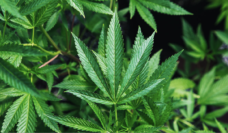Does recreational marijuana use relieve social anxiety? Can smoking marijuana cause lung cancer? If you answered “yes” to both questions, I guess that social media and friends are your primary sources of marijuana information. If you answered “no” to both, your go-to sources of health information might include scientific literature, healthcare providers, and/or public health authorities such as the Centers for Disease Control and Prevention and the National Institutes of Health.
With the long-held restriction on marijuana research, credible information regarding marijuana is limited. Although research has increased in recent years, science takes time, and the new knowledge won’t be available to the public any time soon. In the past decade, misinformation about the health effects of marijuana use has grown rapidly. User-generated content and social networking made it easy for anyone to disseminate information about marijuana. And marijuana industry actors and pro-legalization forces took advantage of the new communication technology to fill the information vacuum.
My co-author, Kyle Holody, and I conducted a systematic review of studies published for the three decades between 1988 and 2017 to obtain a comprehensive picture of marijuana-related content in mainstream news, social media, and advertisements. We also reviewed studies that assessed exposure to these messages and subsequent effects. We drew several conclusions.
First, the tone of marijuana news was negative until the early 2000s when it became more positive. The positive tone was stronger online than in traditional news sources. Second, marijuana-related social media posts touted the benefits of use and provided little information about risk. Social media posts frequently incorporated humor, celebrities, and entertainment culture to catch attention, resulting in high popularity among young people and minorities. The posts often provided step-by-step instructions on how to use marijuana products.
In both legal and non-legal states, educating the public cannot wait and should not be left in the hands of people who profit from selling more of the drug to whoever is willing to pay.
Third, marijuana advertisements posted on online directories such as Weedmaps promoted benefits of use and casual attitudes regarding improper consumption and overdose. Warnings against adverse effects were scant. Disclosures of promotional intent were rare, as were age-based restrictions to access. The industry-originated promotional messages had a strong following among young people. And this contributed to an online environment in which the messages were repackaged and propagated across multiple social media platforms. A few of the studies we reviewed demonstrated that exposure to the messages led to lower perceived harm, more lenient social norms, and increased marijuana use.
The continued decline in perceived risk and social disapproval of marijuana use can be at least partially attributed to widespread misinformation. The most recent Monitoring the Future survey flagged increased marijuana vaping among teenagers in contrast to decreased use of alcohol, cigarettes, and other hard drugs.
On the flip side, researchers discovered that accurate knowledge could protect against inappropriate use. A study of Colorado youth found that non-users displayed more accurate knowledge than users. Even among marijuana enthusiasts, knowledge was related to less frequent use.
As you might have already guessed, recreational use of marijuana does not relieve anxiety or cause lung cancer according to the report from the National Academies of Science, Engineering, and Medicine (NASEM). The report exemplifies the excellent support public health authorities can offer researchers and health educators who can, in turn, share the knowledge with the public. We recently conducted a pilot trial in which we found that knowledge and peer disapproval increased among a small group of college students exposed to a brief universal intervention based on the NASEM report. Our findings will be published later this spring in the Journal of Alcohol and Drug Education. Public health authorities at the federal and state levels should also engage in public education directly by bolstering their outreach efforts. Communication campaigns in Colorado, Washington, and Oregon offer blueprints for other states to further improve upon.
We should take time to debate marijuana legalization and to figure out how to best implement it in the states where recreational marijuana use is already legal. In both legal and non-legal states, educating the public cannot wait and should not be left in the hands of people who profit from selling more of the drug to whoever is willing to pay.
Photo by Margo Amala on Unsplash














